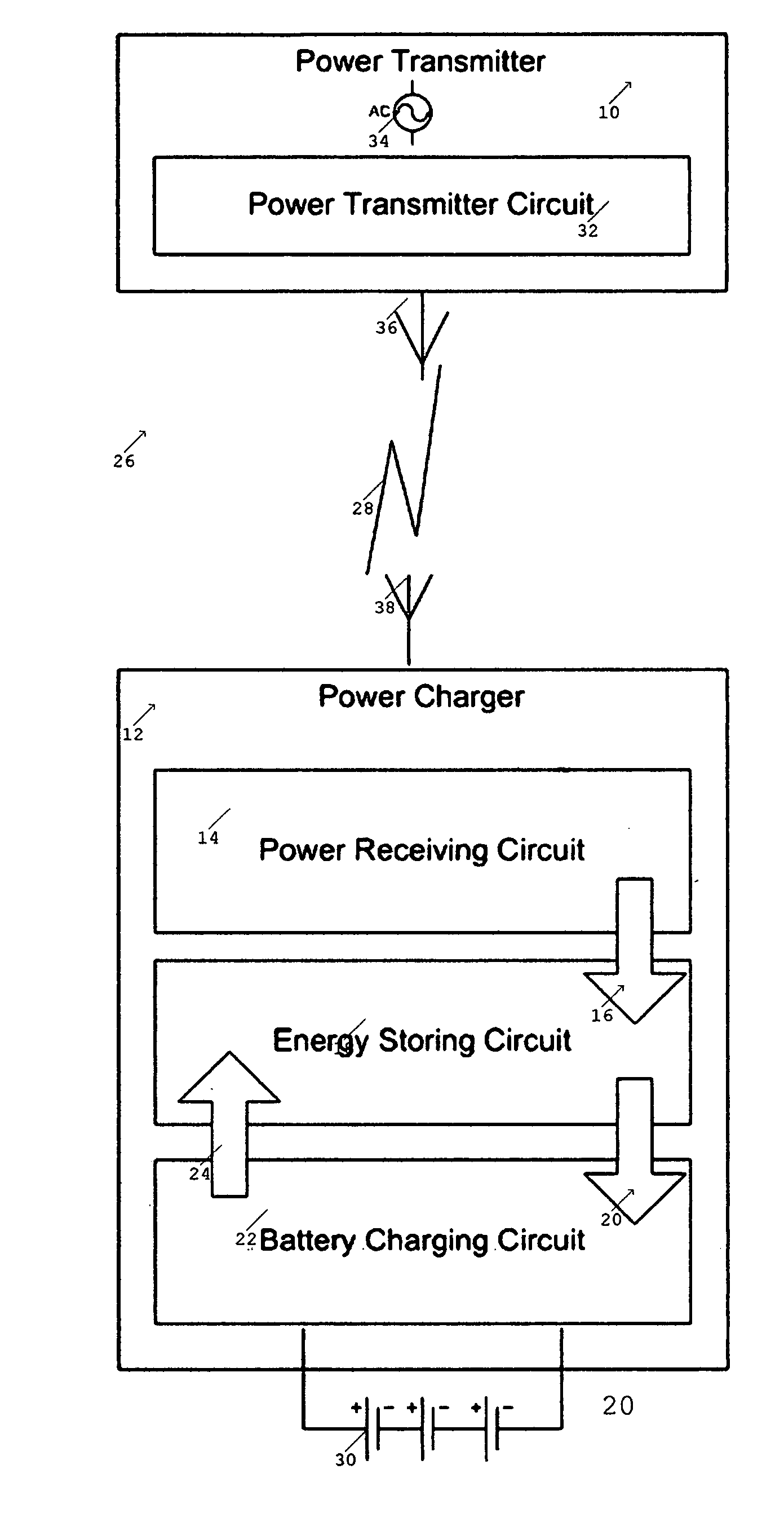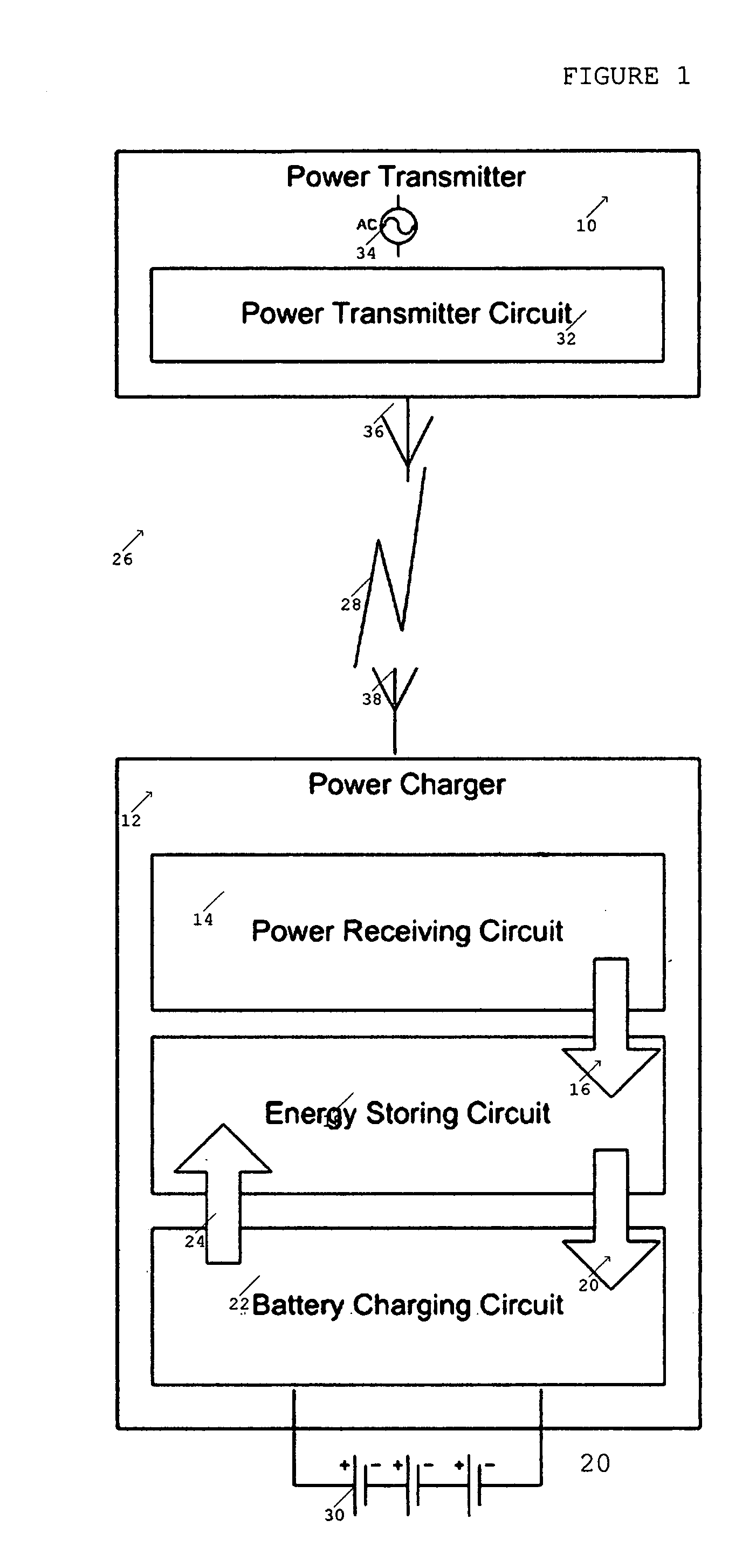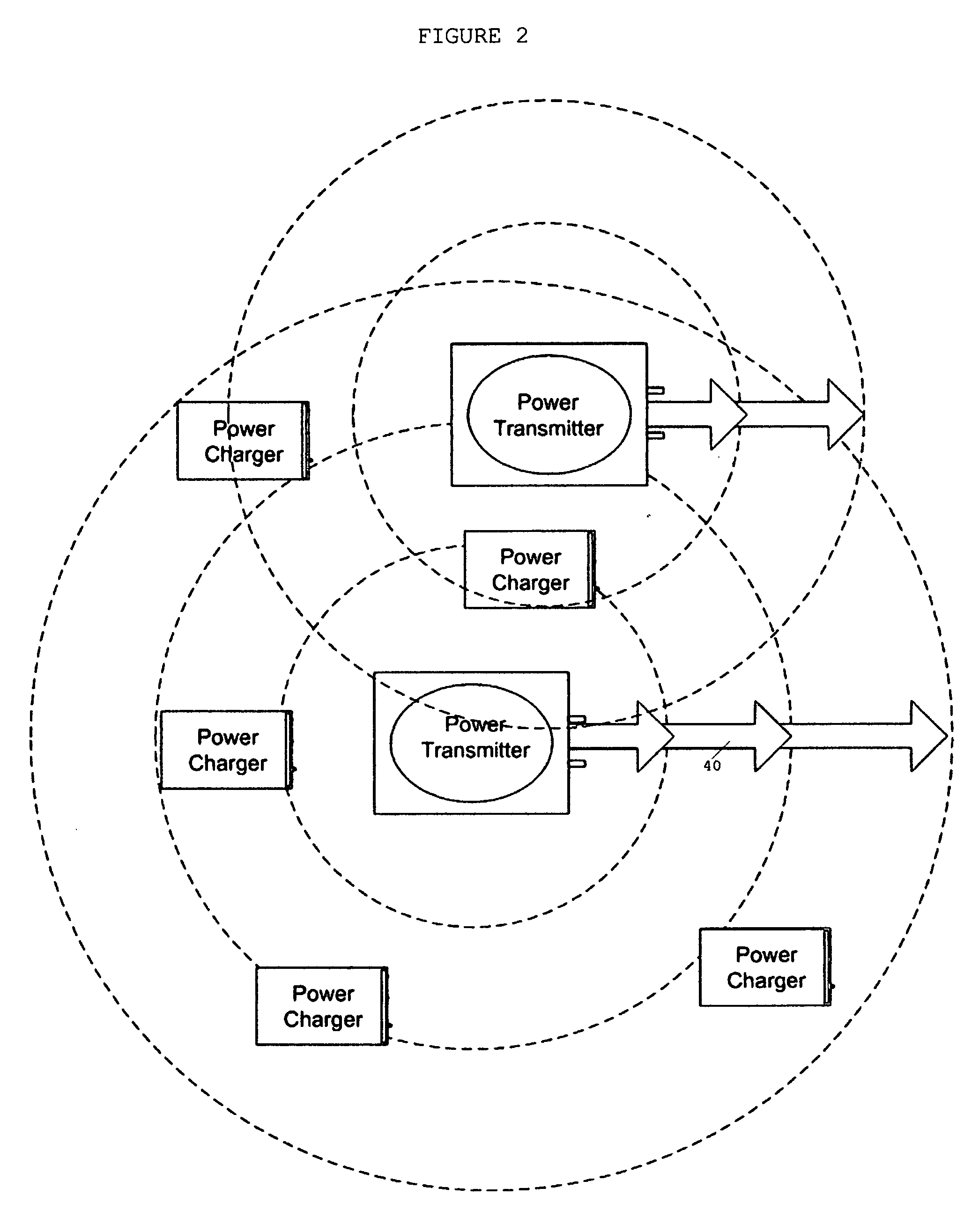Wireless battery charger via carrier frequency signal
a wireless battery and carrier frequency technology, applied in the direction of electric vehicles, transportation and packaging, and battery arrangements for several simultaneous batteries, can solve the problem of not always convenient to worry about plugging in the device for recharging, and achieve the effect of reducing interferen
- Summary
- Abstract
- Description
- Claims
- Application Information
AI Technical Summary
Benefits of technology
Problems solved by technology
Method used
Image
Examples
Embodiment Construction
[0009]FIG. 1 is a block diagram of a wireless battery charger 26. There are two main components: a power transmitter 10 and a power charger 12.
[0010] The structural and operational parameters of the power transmitter 10 and power charger 12 are as follows: the power transmitter 10 is, fundamentally, radio frequency transmitter. The transmitted signal is the Power Signal 28 described hereafter. The power rating and transmitted frequency of the Power Signal 28 must be within the legal and health safety limits set forth by the appropriate government bodies. The power charger 12 must operate under the basic principal of expending less energy to harvest the Power Signal 28 than the total energy available of the received Power Signal 28. The physical dimensions of the power transmitter 10 can be as small as the prevailing technology permits to generate the desired Power Signal 28. The physical dimensions of the power receiver can be as small as the prevailing technology permits. There is...
PUM
 Login to View More
Login to View More Abstract
Description
Claims
Application Information
 Login to View More
Login to View More - R&D
- Intellectual Property
- Life Sciences
- Materials
- Tech Scout
- Unparalleled Data Quality
- Higher Quality Content
- 60% Fewer Hallucinations
Browse by: Latest US Patents, China's latest patents, Technical Efficacy Thesaurus, Application Domain, Technology Topic, Popular Technical Reports.
© 2025 PatSnap. All rights reserved.Legal|Privacy policy|Modern Slavery Act Transparency Statement|Sitemap|About US| Contact US: help@patsnap.com



